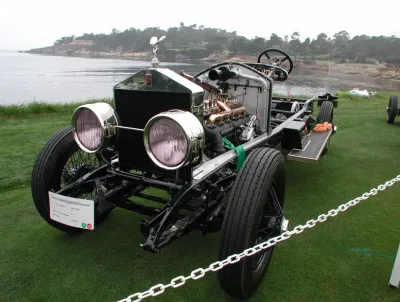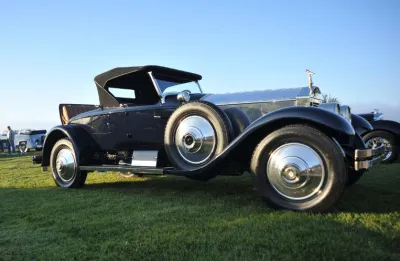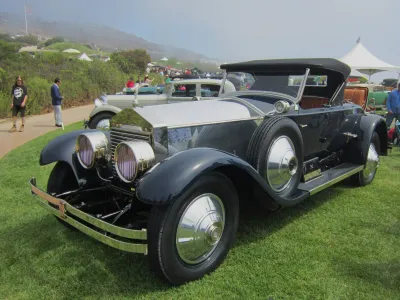Collection
The Silver Ghost is considered by many automobile aficionados as the holy grail of motor cars. The early 1900’s was to the automobile industry what the 1990’s was to dot.com companies. The number of new automobile manufacturers that were incorporated during the early 1900’s was as stunning as the number that filed for bankruptcy. In 1904, Rolls-Royce was a new entrant to the automobile industry.
An upstart, Rolls-Royce produced the Silver Ghost as a combination race/endurance car. The company’s reputation was quickly established after winning many significant speed and endurance competitions.
Between the years 1906-1919, Rolls-Royce attempted to import chassis to America. The time consumed in shipment together with the time required to fit a chassis with a coach resulted in the company establishing an American subsidiary in 1920. Located in Springfield, MA with 49 British expatriate journeymen, the company commenced producing Silver Ghosts to the exact specifications of the British manufactured chassis.
After the production of only 25 chassis, it was determined that future Springfield chassis should be made with American as opposed to British components. Rolls-Royce did not manufacture coaches. However, Packard, Cadillac and Pierce-Arrow marketed their cars with bodies such that a customer could purchase a motorcar off the showroom floor. To even the competition, Rolls-Royce acquired Brewster a New York coach builder and commenced offering their customers the option of a standard coach or retaining the services of a third party coach builder.
Under pressure from competitors the Springfield factory in 1924 switched their production from right-hand to left hand drive. Only 600 left-hand drive Ghosts were produced. In 1926 Rolls-Royce introduced the Phantom I and by 1931 the economic effects of the Great Depression caused Rolls-Royce to shutter the Springfield facility.
1703 Silver Ghosts were made in Springfield. The price of a Silver Ghost chassis fitted with a Piccadilly Coach was $12,930.



